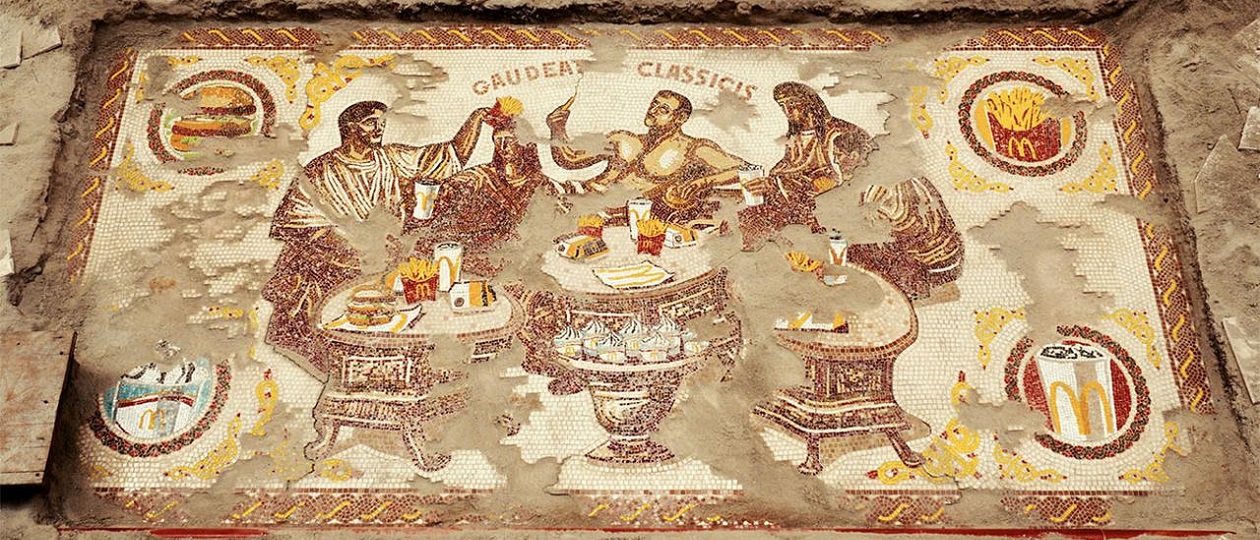
Thrushes were a ‘fast food’ for the Romans in imperial cities, rather than an exclusive banquet delicacy.
A study published in the International Journal of Osteoarchaeology analysed the remains of thrushes found in the toilet of a fast food establishment from the first century BCE in the ancient Roman town of Pollentia on the island of Majorca, and concluded that these small songbirds were not an exclusive food for luxurious banquets, as previously thought, but rather a very popular street ‘fast food’ among the urban population.
The archaeologists discovered a pit latrine or toilet that was connected to a tabernea, where food and drink were sold on the street.
Among the accumulated debris were pig bones, shells and fish, as well as up to 165 song thrush (Turdus philomelos) bones.
These remains were not mixed with other household waste, but were found in a clearly commercial context.
The pit was associated with a place where there were amphorae on a stall similar to those found in Pompeii, the study explains, so it is likely that the thrushes were sold for immediate consumption, a kind of “quick meal”.
Until now, Roman historical sources, such as the recipe books of Apicius or the texts of Pliny the Elder, spoke of thrushes as an expensive delicacy, raised on special farms and served at elite feasts and banquets. Even the Edict on Maximum Prices of 301CE mentions them as a luxury product.
However, the Pollentia bones tell a different story: the remains were found in a modest establishment, not an aristocratic villa, and the femurs and humeri are missing, indicating that the birds were skinned and cooked whole, perhaps fried in oil, to be sold and eaten locally.
The presence of these birds in a non-elite context suggests that they were widely consumed, forming part of the daily diet and the urban economy, the researchers note.
Moreover, thrushes, which migrated to Mallorca in the winter, were an abundant and inexpensive resource at the time.
Analysis of the bones revealed that almost all the breastbones had been intentionally broken. When the breastbones were removed, they were broken during cooking, the study notes, consistent with Mediterranean cooking techniques still used today: flattening the bird to cook it whole, as is done with quail, for example.
Furthermore, the lack of cuts or burn marks suggests that they were not fried but sautéed in oil, a quick method ideal for street vending. It was a standard dish, optimized for commercial service, the study concludes.
Why were they considered a luxury?
Roman sources speak of thrushes being fattened on figs or served with fancy sauces, something only the wealthy could afford. But research in Pollentia shows that in winter, when migratory flocks arrived, hunters would catch them with nets or some kind of glue (a technique still used in some places) to sell them on street stalls.
The difference was one of season and circulation: the “poor” ate wild thrushes, in season, roasted and sold on the street, while the “rich” consumed them bred in captivity, fattened and served in the summer, that is, out of season, as Plutarch describes at the banquet of Lucullus.
Pollentia is not an isolated case; elsewhere, for example in Pompeii, bird bones have been found near a thermopolium (food bar), and some rural villas in the United Kingdom have also yielded similar remains.
Almost all Roman cities had their “fast food” establishments, tabernae, like Pollentia, which sold not only wine but also fast food for workers, merchants or travellers.
The study finally concludes that thrushes, although a minority in the Roman diet compared to pork, were an important aspect of urban consumption.
The evidence from Pollentia challenges the idea that they were merely a marker of elite status. It’s curious how little some things have changed, if we think about today’s ubiquitous chicken wings.





